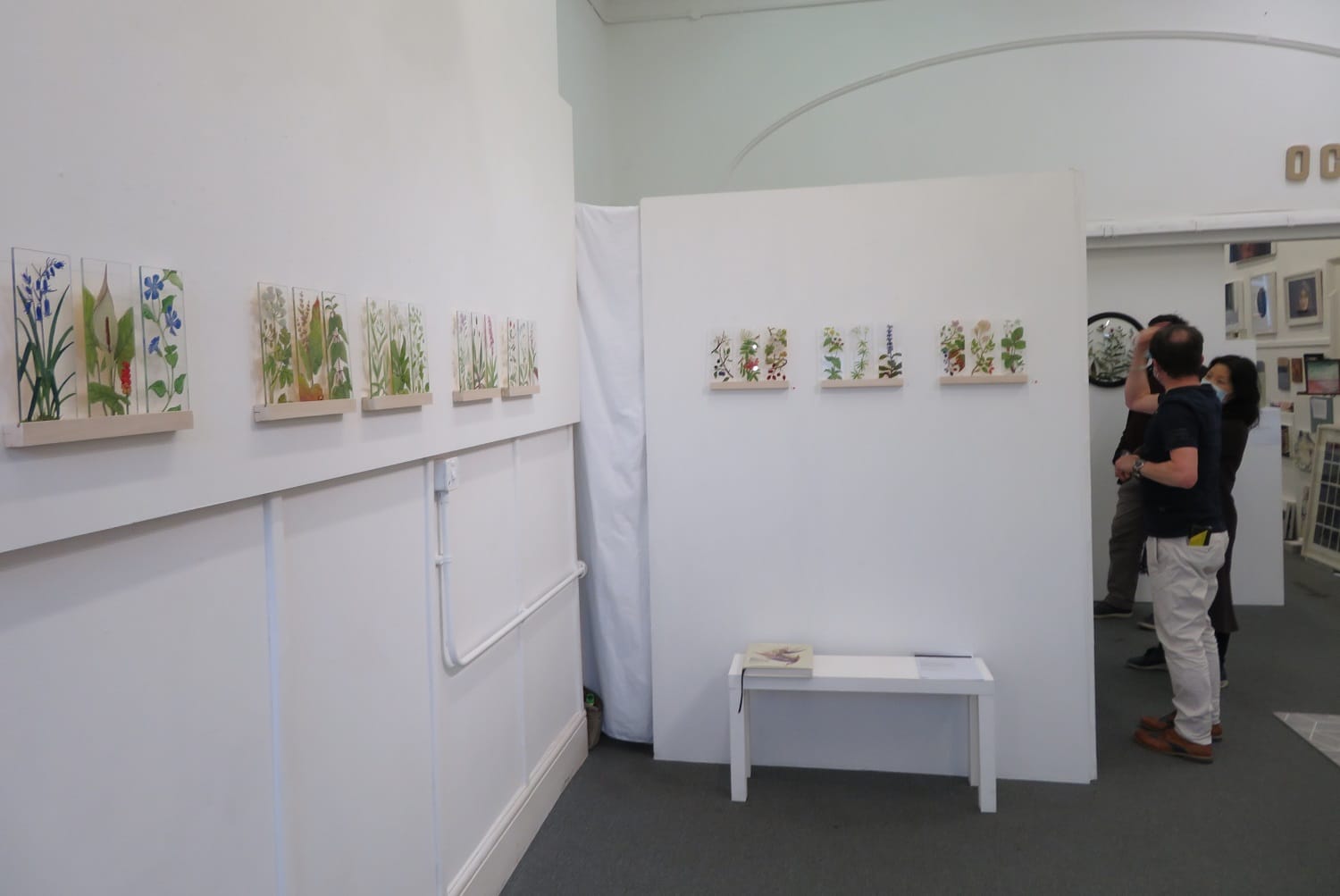What would become of the Civic Offices on Wood Quay if the council relocates?
After The Currency reported the idea of the council moving its HQ, councillors were talking about and thinking through the pros and cons and implications.
“My whole thing is to make wild weeds and plants, that most people disregard, precious,” says Yanny Petters.

Artist Yanny Petters started painting on glass as an apprentice signwriter working in Dublin pubs in the early 1980s.
“We did a lot of Victorian-style pubs,” says Petters. “Glass murals, signs, whiskey mirrors.”
She recalls learning her trade with a company called Sign Design. They worked on Café en Seine in Dawson Street, she says and the Waterloo bar in Baggot Street too, which is still there among others.
They painted everything by hand, Petters says, and the owner of Sign Design Michael Gemmell also works as an artist now.
“It was a great way to learn,” says Petters, recently standing in the Olivier Cornet Gallery, the white walls adorned with her delicate flowers painted on glass. “I’m eternally grateful to Michael for teaching me.”
The works around her make up an exhibition called Field of Vision, which highlights the beauty in the weeds, rushes and wildflowers – as well as the danger posed by climate change – and runs until 6 November.
Petters is well known for her mastery of a specialist glass-painting technique called verre églomisé, says Patricia Butler, author of the book Irish Botanical Illustrators and Flower Painters.
“She really is a fantastic artist,” says Butler. “There aren’t many people who are capable of employing it but she certainly is.”
After her apprenticeship, Petters worked for years as a signwriter in London, she says. But work dried up in the recession around 1993, so she moved back to Wicklow.
She joined a community employment scheme in the Signal Arts Centre in Bray and started painting watercolours, she says. Then, experimenting with painting on glass, artistically.
“I’m always pulling the threads of all the years of influence and experimentation,” she says. “I feel very lucky to have the freedom to do these things.”
Her work is inspired by a childhood spent in the countryside playing with plants and flowers. “We might chase each other with nettles,” she says. “The foxgloves, you would always put them on your fingers.”

She recalls when she and her brother were given a microscope and she started studying plants in more depth.
Verre églomisé involves painting glass from the back, and it dates back to Normandy in the 11th century, says Butler.
Petters says she picks a plant or flower and draws it in a local meadow, then she brings it home and draws it on vinyl.
She uses acid to make the back of the pane of glass into frosted glass, so that the paint sticks better.
She draws the reverse of the original drawing on the back of the sheet of glass – tracing from the vinyl. “I’m looking through the glass at the drawing,” she says. “I’m working in reverse.”
Then she builds up layers of paint on the back, and keeps an eye on how it looks from the front, she says.
At the end, she paints the back of the glass white and, for this exhibition, she followed that with a layer of 24-carat gold paint – which, she says, gives a golden glow behind the plant.
“My whole thing is to make wild weeds and plants, that most people disregard, precious,” she says.
Last year, Butler curated the National Gallery exhibition “Drawn from Nature”, which was based on her book.
She traced the history of Irish botanical art and Petters was among 10 contemporary artists in the show, she says.
Works by Petters are also included in the collection of the Shirley Sherwood Gallery of Botanical Art at Kew, in London. “She is on the international circuit now,” says Butler.
Petters has started rewilding her garden and stopped mowing the lawn. “We need to nurture what we have, it’s all interconnected, be it the insects or our own well-being,” she says.
She teaches watercolour painting and gives a tour called “weed and wonderful”, she says, which highlights the beauty in the weeds.
Looking that through a microscope the sting of a nettle looks like the end of a hypodermic needle, she says. “It’s perfectly evolved and actually it’s protecting itself.”

One of the most eye-catching items in the Field of Vision exhibition is a large ornate fan, with a flower painted on a circular piece of glass in each of the blades.
In recent summers Petters says she noticed that people in Ireland had started using fans. Before that it was never really hot enough, she says. She fears that is the effect of climate change.
So she created two fans – the other is in the National Museum – with a different habitat represented in each of the blades.
“The bluebells is the woodland, the clover is fields, that is the bog and this is the hedgerow,” she says, pointing up at the blades of the fan.
The habitats are threatened by climate change, so “any of these plants could disappear”, she says.
[CORRECTION: This article was updated on 13 October at 12.39pm. Petters moved back during the recession in 1993, not 2008, and her fan is in the National Museum not the National Art Gallery. Apologies for the errors.]